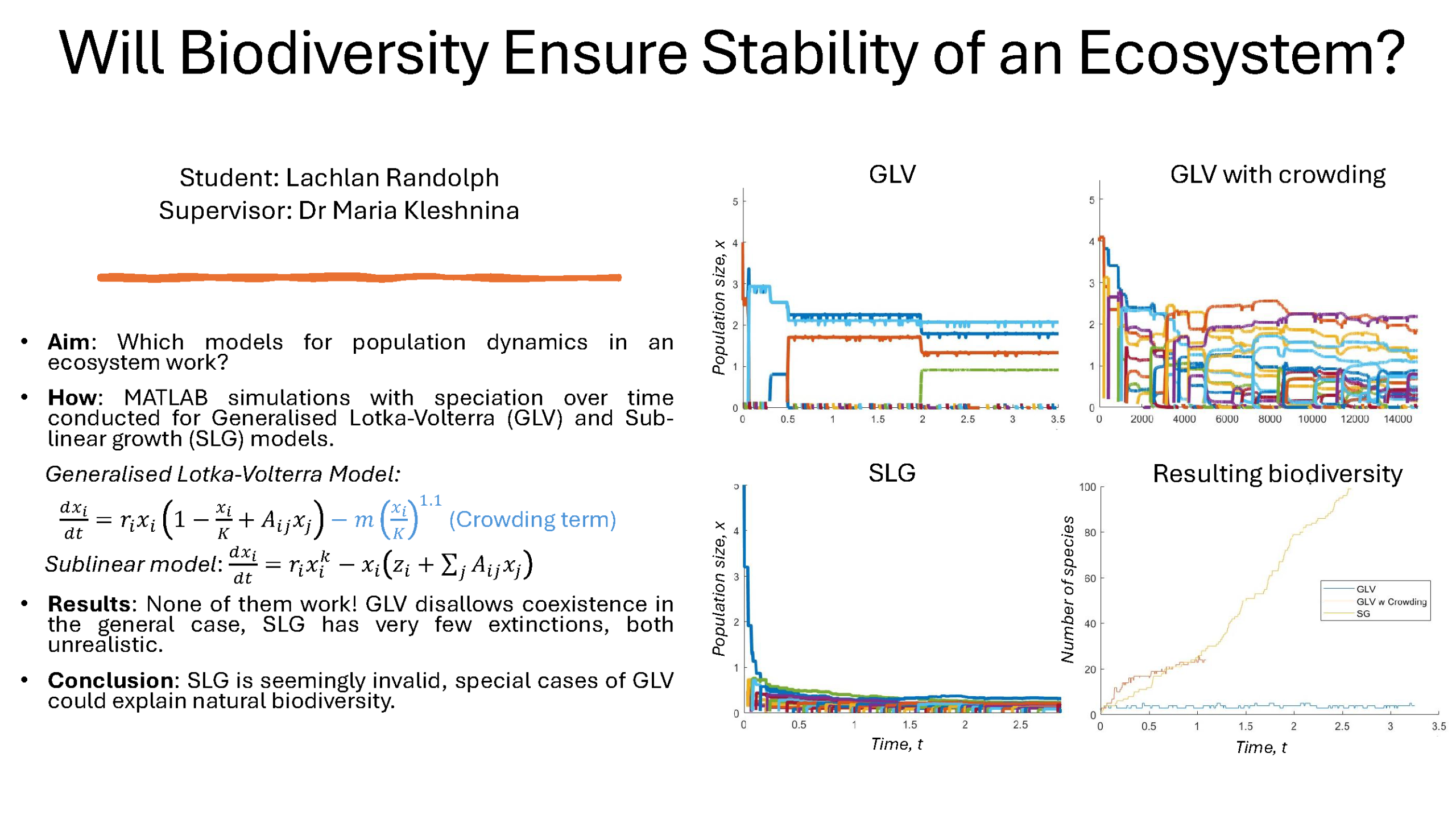Will Biodiversity ensure Stability of an Ecosystem: Comparing Lotka-Volterra and Sublinear Growth Models with Evolutionary Competitor Species Networks
Lachlan Randolph
Supervisor: Dr Maria Kleshnina
In population dynamics, the Lotka-Volterra (LV) model has been a fundamental tool since the early 20th century, providing a framework for understanding species interactions. As a general population dynamics model, the generalized LV model employs logistic growth to describe the temporal changes in species biomass B, allowing for a more flexible representation of ecological interactions, making it a widely used model in theoretical and applied ecology.
However, despite its mathematical convenience, the LV model has limitations in capturing the stability of large ecosystems observed in nature. The model tends to predict more frequent species extinctions and heightened sensitivity to perturbations, failing to account for the resilience seen in real ecological communities. This discrepancy is central to the biodiversity-stability paradox, an ongoing debate about how diverse ecosystems maintain long-term stability. A paper by Hatton et al. published in Science in 2024 instead proposes a sublinear growth (SG) model, where the population dynamics over time does not follow first principles of biology.
In parallel, an article by Hamster et al. in 2024 constructs an agent-based simulation approach to a predator-prey LV model to contribute to the debate. We adapted Hamster’s MATLAB code for a competition system. The simulation initiates with two species, and over a long time, speciation events occur as new competitors were descending from their ancestors within the system. The simulations used randomly generated interaction matrices. Our simulations suggest that larger, more diverse competitor networks are more sensitive to extinction. Conversely, the simulations demonstrated that under the similar procedure, the SG model suggested by Hatton is quite stable, with most species networks having an over 90% survival rate. However, as has been noted by Aguade-Gorgorio et al. in 2024, the behaviour of the SG model with competitors is unrealistic, since species in nature demonstrate competitive exclusion, leading to more extinctions than observed in the model. Thus, these findings demonstrate that the general cases of LV and the formulation of SG proposed by Hatton et al. do not yet explain the large biodiversity of competitor species networks, thus requiring further investigation into this paradox.
Media Attributions
- Will biodiversity ensure stability of an ecosystem: comparing lotka-volterra and sublinear growth models with evolutionary competitor species networks © Lachlan Randolph is licensed under a CC BY-NC (Attribution NonCommercial) license


